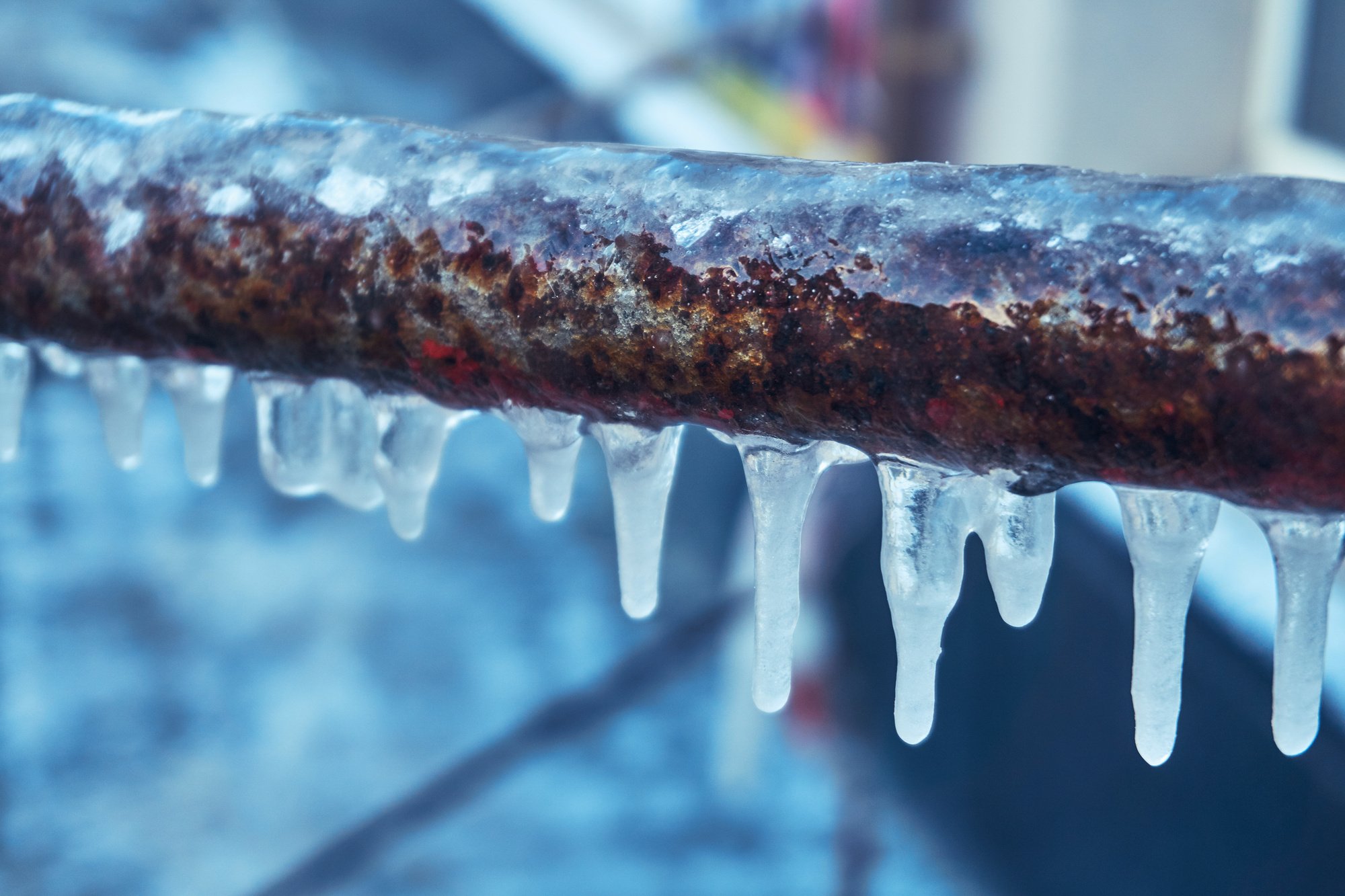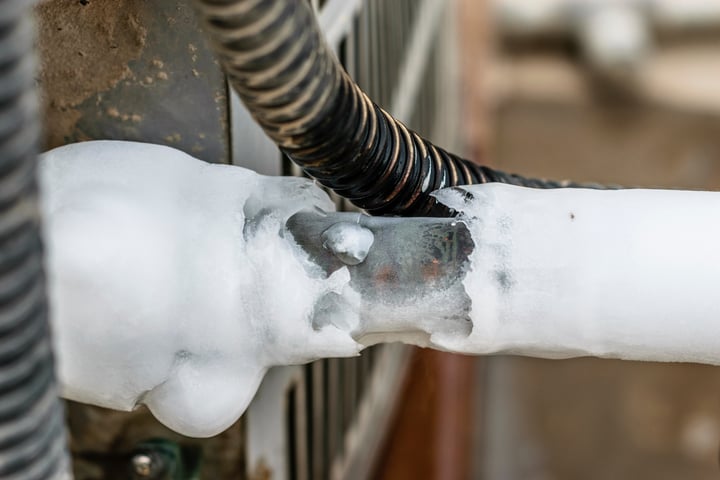Frozen AC Pipe - Identifying and Resolving the Issue Quickly
Frozen AC Pipe - Identifying and Resolving the Issue Quickly
Blog Article
This post following next involving Have a Frozen AC Line? Here’s How to Fix It is extremely motivating. Read it for yourself and decide what you think of it.

Intro
Finding that your air conditioning pipe is frozen can be worrying, specifically during warm summer season when you depend on your air conditioning unit one of the most. Recognizing what to do in such a circumstance is crucial to prevent further damages to your air conditioning system and guarantee your comfort inside your home.
Understanding the Causes
Several variables can contribute to the freezing of an AC pipe. Recognizing these reasons can aid you resolve the issue successfully.
Absence of Airflow
One usual source of a frozen air conditioning pipe is inadequate air movement. When the air flow over the evaporator coil is restricted, it can cause the coil to go down below freezing temperature level, causing ice formation on the pipe.
Low Refrigerant Levels
Insufficient refrigerant degrees in your a/c system can likewise result in an icy pipeline. Low refrigerant degrees can trigger the stress in the system to go down, leading to the freezing of wetness on the evaporator coil.
Cold Weather Conditions
In cooler climates, freezing temperatures outside can add to the freezing of a/c pipelines. If your AC unit is not properly protected or if there are leakages in the ductwork, chilly air can penetrate the system, causing the pipeline to ice up.
Dirty Air Filters
Filthy or clogged air filters can limit air movement in your air conditioner system, bring about different concerns, including a frozen pipeline. It's vital to replace or clean your air filterings system frequently to make certain appropriate airflow and stop ice build-up.
Indicators of a Frozen A/c Pipe
Recognizing the signs of a frozen a/c pipe is important for prompt activity.
Minimized Airflow
If you notice a considerable decrease in air flow from your vents, it might show an icy pipeline.
Ice Buildup on the Pipe
Noticeable ice buildup on the refrigerant line or the evaporator coil is a clear indicator of a frozen air conditioning pipeline.
Weird Sounds from the Unit
Unusual audios, such as hissing or bubbling, originating from your air conditioner device can signal that there's ice present on the pipe.
Immediate Actions to Take
When confronted with a frozen AC pipeline, it's important to act quickly to prevent more damage to your air conditioning system.
Turning off the a/c
The initial step is to turn off your air conditioning unit to prevent the system from running and intensifying the problem.
Looking for Blockages
Inspect the location around the indoor unit for any kind of obstructions that may be obstructing air flow, such as furniture or drapes.
Defrosting the Pipe
You can use mild methods like positioning towels taken in warm water around the icy pipe to help thaw it gradually.
Preventive Measures
Taking preventive measures can aid stay clear of future events of an icy air conditioning pipe.
When DIY Methods Fail
If your attempts to thaw the pipe or address various other problems are not successful, it's time to call in a specialist.
Significance of Hiring a Professional HVAC Technician
A certified HVAC specialist has the expertise and tools necessary to detect and fix problems with your a/c system securely and effectively.
Regular Maintenance Checks
Schedule regular maintenance checks with a professional HVAC professional to make certain that your AC system is running efficiently.
Changing Air Filters
Regularly replace or cleanse your air filters to prevent airflow limitations and preserve ideal efficiency.
Shielding Exposed Pipes
If your air conditioning pipes are exposed to cold temperatures, take into consideration shielding them to prevent freezing throughout winter season.
Seeking Professional Help
If DIY approaches fail to solve the problem or if you're not sure about how to continue, it's finest to look for support from a qualified HVAC specialist.
Final thought
Taking care of a frozen a/c pipeline can be a discouraging experience, yet recognizing exactly how to react can help minimize damages and recover comfort to your home. By comprehending the causes, recognizing the signs, and taking timely activity, you can effectively deal with the concern and stop future events.
Frozen AC Line: Why It Happens & What To Do About It
A frozen AC line can be a rather peculiar sight in a place like Phoenix, Arizona where nothing ever freezes. In this post, we’ll discuss what makes an air conditioner line frozen – and what you can do about it.
Dirty Air Filters
Did you know that you should be cleaning or replacing your air filters on a monthly basis? Failing to do this can result in airflow issues that, in turn, cause your evaporator coils and lines to freeze over. You’ll notice a buildup of ice on both components, although the buildup on your pipes will, of course, be more evident unless you open your air condition up to reveal the coils.
What To Do About It
Give your air filter a good cleaning if it’s reusable. If not, replace the filter outright. Next, switch your air conditioner’s fan setting on and leave it there for 2-3 hours. This will draw warm air in, helping to thaw your evaporator coil. You can also check out this article for some tips on cleaning the coils themselves if you’d like to speed the process up. Before you switch the unit back to its normal state, make sure the supply vents are completely unobstructed and free of dust or other debris.
If you keep having this issue even after replacing your filters regularly, contact a local HVAC repair company and have them inspect your evaporator coil, ductwork, and any other components that may be at fault. If you live in the Phoenix, Arizona area, give American Home Water and Air a call.
Low Refrigerant Levels/Leakage
What To Do About It
Contrary to what air conditioner “recharge” companies often tell their clients about refrigerant, it should never need to be simply refilled. You see, refrigerant runs in what experts refer to as a “closed loop.” Refrigerant really shouldn’t be leaving that loop. If it is, you’ve got a leak.
Paying someone to come and pump more refrigerant into your system (aka “recharge” it) isn’t the solution. Doing that will simply kick the can down the road. Besides, refrigerant leaks can be harmful to the environment and people in your home.
Rather, you need to take care of the leak with the help of a technician. Check out this article for some more information about dealing with air conditioners that are leaking refrigerant. Before you contact a technician, switch your thermostat to the off position. Then, switch the fan setting on and let it run for 2-3 hours so the unit can thaw.
Improper Temperature Setting
Improper temperature settings can also cause a drop in your air conditioner’s pressure. What many people don’t realize is that air conditioners are actually designed to run when temperatures have fallen above roughly 60 degrees Fahrenheit. If you run the unit when it’s cold outside, you’ll run into many issues, including frozen components.

We hope you liked our piece on Have a Frozen AC Line? Here’s How to Fix It. Thanks a ton for taking the time to read our post. If you enjoyed our blog posting please do not forget to share it. We take joy in reading our article about Air Conditioner Frozen? How To Fix your Frozen AC Line.
Book Service Report this page